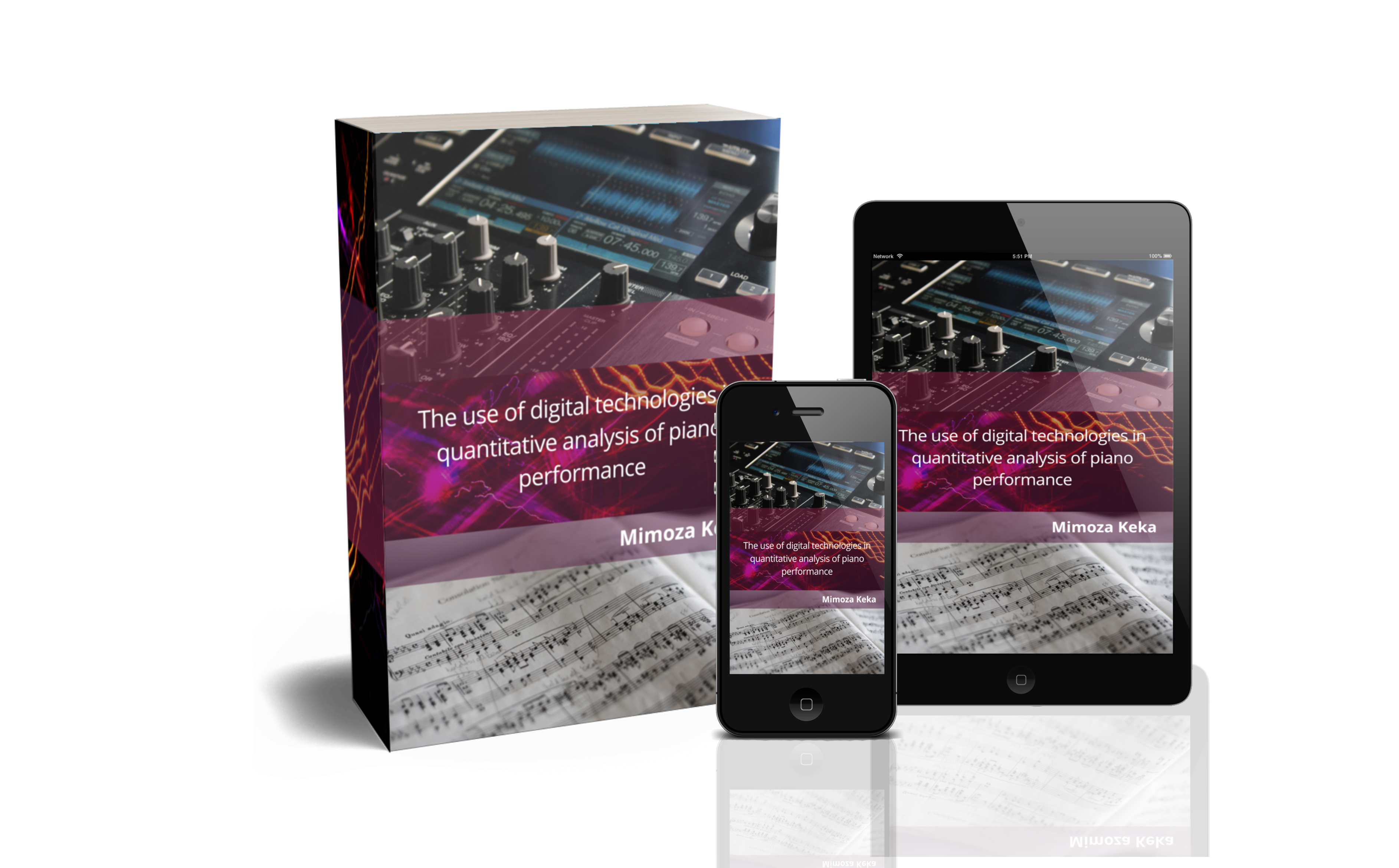The use of digital technologies in quantitative analysis of piano performance
Literature "The use of digital technologies in quantitative analysis of piano performance"
This book is the first of its kind and scope in the history of piano performance’s analysis. The book is intended for musicians, pianists, professional piano teachers, performing pianists, college students who would like to pursue their education in the field of music performance, as well as for all the adult amateurs who would like to broaden their knowledge.
This dissertation book shows how to design a pattern for quantitative analysis of the piano performance using the digital technologies, starting with review towards the analysis of piano performance and the use of digital technologies, historical review of the treatises on piano performance, defining the problems of the pianistic performance, review of the digital technologies applied in music, continuing with presentation of the research methodology (sample, instrument, procedure, database structure, processing of data obtained from MIDI, audio and video recordings, and presenting the results of the analysis of MIDI, audio and video recordings. The book offers useful information about the treatises for piano technique and music performance, the implementation of the digital technologies and their connection with the music performance analysis. It also deals with related piano playing techniques, the interval/melodic and metric/rhythmic plan, as well as the interpretive plans – dynamic, articulation and tempo/agogic. The text is illustrated with score samples, pictures (amplitude and spectral envelopes) and graphical representations.
This doctoral dissertation research work by virtuoso concert pianist Mimoza Keka ”The use of digital technologies in quantitative analysis of piano performance” is available now in English language.
Endorsements/Reviews:
“Firstly, I would like to express my greatest pleasure for the completion of this doctoral dissertation, for the choice of the subject, which is a significant novelty for the piano theory. The research itself is extraordinary, being written with great detail and quality. It has clear and concise review of the evolution of the pianism, from its very beginnings to the modern achievements in the field of use and application of digital technologies and quantitative analysis. I must make a statement about the extraordinary structure of the work, with its rich bibliography, lavish elements and parameters of modern, scientific research work. This work represents significant contribution to the modern digitalization, which opens up new perspectives not only in the music theory, but also in the piano theory and piano pedagogy for further scientific researches of this kind.”
– Prof. Mr.art. Todor Svetiev, Professor of Piano, University Ss. Cyril and Methodius in Skopje.
“I must say that this research and the way it was done was very fascinating. Firstly we wanted to do this research with the use of the Disklavier, but since there is not any instrument of its kind here in the country, nor in the Balkans, therefore we used both MIDI controller and piano (piano performance on a Bösendorfer). This work is revolutionary and first of its kind not only here in the country but also abroad.”
– Prof. PhD. Dimitrije Buzharovski, Professor of Musicology, University Ss. Cyril and Methodius in Skopje.
“It is an honor for me to be part of the evaluation committee. This book reaches new heights in the creation of the doctoral dissertations at our Faculty, which will serve as both as a guideline and a challenge to the new candidates which will enroll to this study program. The structure and the content of this work is excellent, which will be of great guidance for the new researchers. This is how one doctoral dissertation should look like. ”
– Prof. Dr.аrt. Marija Gjoshevska, Professor of Piano, University Ss. Cyril and Methodius in Skopje.
“Congratulations for the creation of this book. This work is of extreme importance for the performing pianists because it shows completely new approach to the piano performance analysis, as well as new method of analyzing the dynamic, tempo/agogic, in order to improve the overall piano performance. ”
– Prof. Dr.аrt. Emilija Potevska Popivoda, Professor of Piano, University Goce Delčev in Štip
“Many congratulations to Ms. Keka for this revolutionary work in which she, along with her mentor, created new approach to the analysis of music interpretation, in this case the piano interpretation itself, and for the first time with the use of the digital technologies. I am delighted to assume that the goal of this research is completely and fully accomplished. This research with its remarkable interdisciplinary approach, it is exemplary not only in the country but also abroad. Throughout the creation of this work, Mimoza also mastered an elite piano repertoire which makes this doctoral dissertation complete.”
– Prof. Dr.sc. Trena Jordanoska, Professor of Musicology, University Ss. Cyril and Methodius in Skopje.
You must not miss this outstanding book on piano performance analysis using the digital technologies. Mimoza Keka’s comprehensive coverage of the subject belongs in every piano teacher’s and music researcher’s library. Reward yourself with this book on piano performance analysis. Read this review and then order it promptly. You will not only be richly rewarded with a resource you will refer to frequently but also take great pleasure in reading its clear, intriguing text. Highly recommended. Though this is the first book devoted to the use of digital technologies in quantitative analysis of piano performance, it sets a high standard with its clear, comprehensive coverage of the subject.


